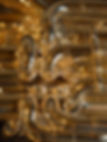
METALS
Metal working is one of the world's oldest trades. It originated in about 2500 B.C. when bronze was discovered, although smiths prior to that time produced architectural ornaments using gold. It was not until the discovery of iron in 1200 B.C., however, that the craft of structural metal work truly developed
Use one of our metals available to build your next project
if you can dream it we can build it

ALUMINIUM
Aluminum is remarkable for the metal's low density and for its ability to resist corrosion. Structural components made from aluminum and its alloys are vital to the aerospace industry and are important in other areas of transportation and structural materials.

BRASS
Brass is an alloy of copper and zinc; the proportions of zinc and copper can be varied to create a range of brasses with varying properties. Brass is used for decoration for its bright gold-like appearance; for applications where low friction is required such as locks, gears, bearings, doorknobs, ammunition casings and valves; for plumbing and electrical applications. Brass is often used in situations where it is important that sparks not be struck, as in fittings and tools around explosive gases.

BRONZE
Bronze is an alloy consisting primarily of copper, usually with tin as the main additive. It is hard and tough. Bronze is harder than copper as a result of alloying that metal with tin or other metals. Bronze is also more fusible (i.e., more readily melted) and is hence easier to cast. It is also harder than pure iron and far more resistant to corrosion.

CAST IRON
Cast iron With its relatively low melting point, good fluidity, castability, excellent machinability, resistance to deformation and wear resistance, cast irons have become an engineering material with a wide range of applications and are used in pipes, machines, ornamental and automotive industry parts, such as cylinder heads, cylinder blocks and gearbox cases. It is resistant to destruction and weakening by oxidation (rust).

COPPER
Copper is a ductile metal with very high thermal and electrical conductivity. Pure copper is soft and malleable; a freshly exposed surface has a
reddish-orange color. It is used as a conductor of heat and electricity, a building material, and a constituent of various metal alloys.

STAINLESS STEEL
There are different grades and surface finishes of stainless steel to suit the environment the alloy must endure. Stainless steel is used where both the properties of steel and resistance to corrosion are required. Stainless steel differs from carbon steel by the amount of chromium present. Unprotected carbon steel rusts readily when exposed to air and moisture. This iron oxide film (the rust) is active and accelerates corrosion by forming more iron oxide, and due to the greater volume of the iron oxide this tends to flake and fall away. Stainless steels contain sufficient chromium to form a passive film of chromium oxide, which prevents further surface corrosion and blocks corrosion from spreading into the metal's internal structure, and due to the similar size of the steel and oxide ions they bond very strongly and remain attached to the surface.